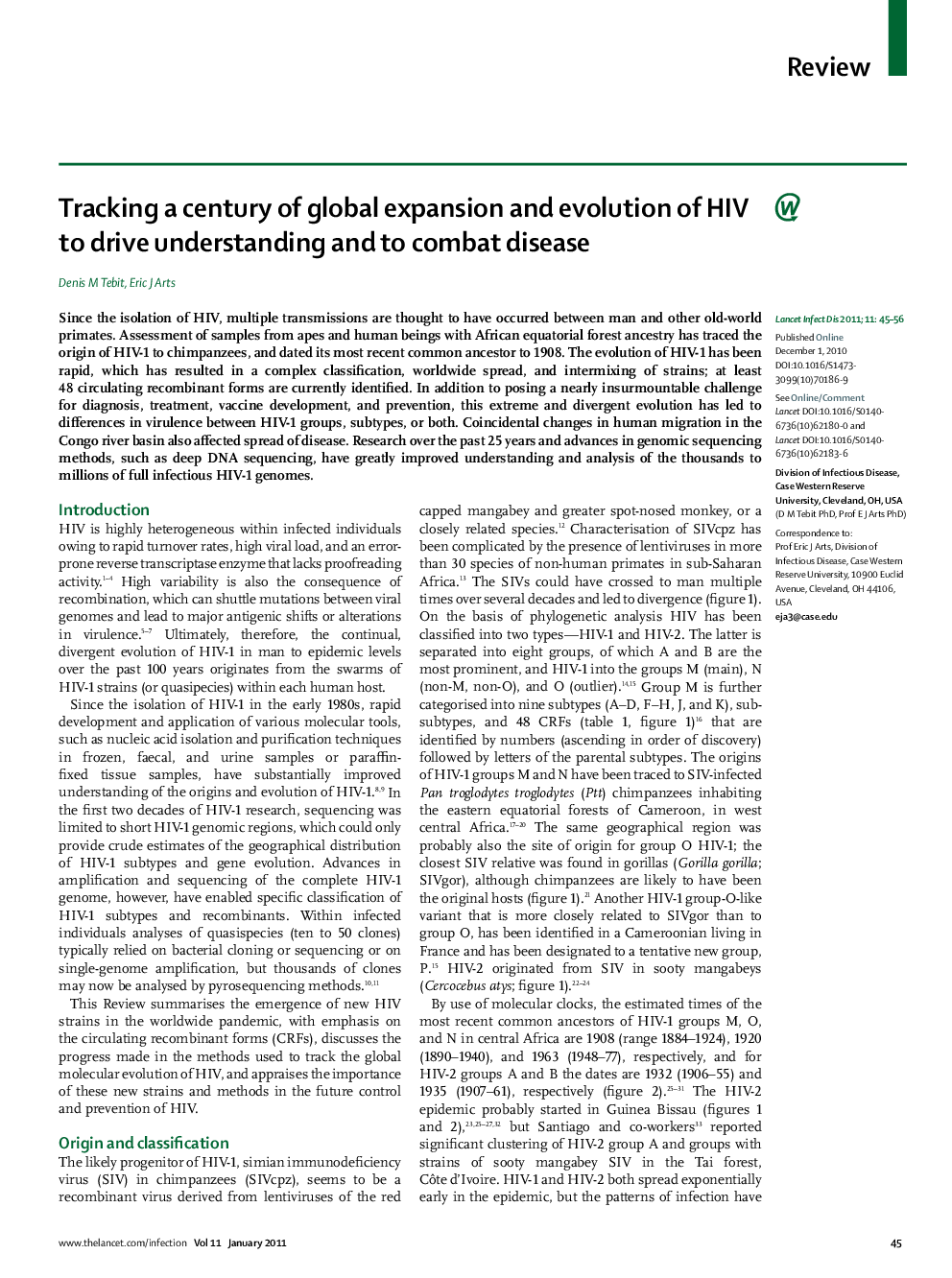| Article ID | Journal | Published Year | Pages | File Type |
|---|---|---|---|---|
| 3410535 | The Lancet Infectious Diseases | 2011 | 12 Pages |
SummarySince the isolation of HIV, multiple transmissions are thought to have occurred between man and other old-world primates. Assessment of samples from apes and human beings with African equatorial forest ancestry has traced the origin of HIV-1 to chimpanzees, and dated its most recent common ancestor to 1908. The evolution of HIV-1 has been rapid, which has resulted in a complex classification, worldwide spread, and intermixing of strains; at least 48 circulating recombinant forms are currently identified. In addition to posing a nearly insurmountable challenge for diagnosis, treatment, vaccine development, and prevention, this extreme and divergent evolution has led to differences in virulence between HIV-1 groups, subtypes, or both. Coincidental changes in human migration in the Congo river basin also affected spread of disease. Research over the past 25 years and advances in genomic sequencing methods, such as deep DNA sequencing, have greatly improved understanding and analysis of the thousands to millions of full infectious HIV-1 genomes.
